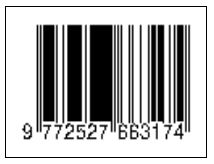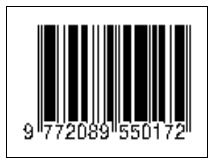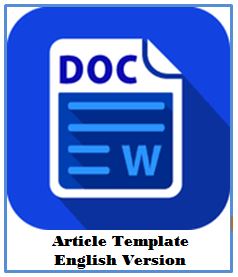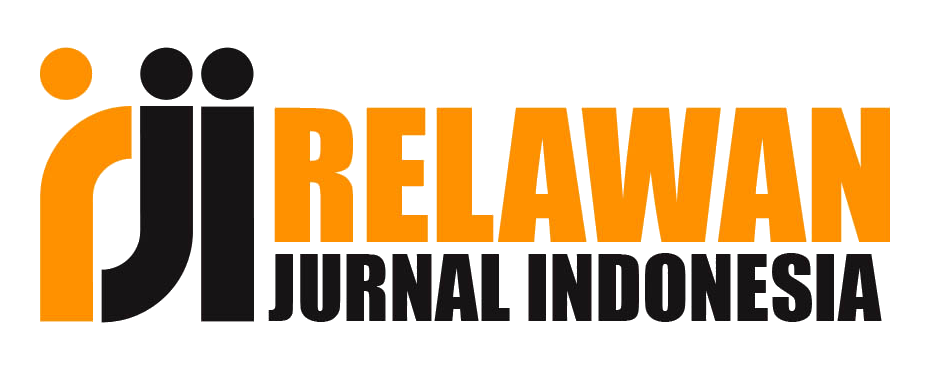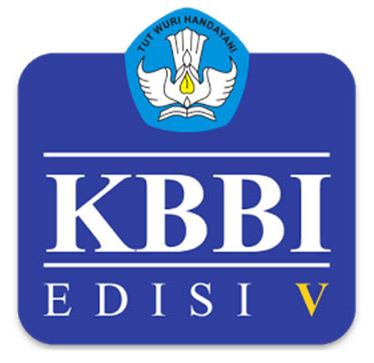Pengaruh Safety Climate dan Perceived Supervisor Safety terhadap Safety Performance yang Dimediasi oleh Psychological Strain: Studi pada PT PAL Indonesia (Persero)
(1) Universitas Airlangga
(2) Universitas Airlangga
(*) Corresponding Author
Abstract
Keywords
Full Text:
PDFReferences
Arikunto, S. (2002). Prosedur Penelitian: Suatu Pendekatan Praktik. Jakarta: PT Rineka Cipta.
Caplan, R. D., Cobb, S., French, J. R. P. Jr., Harrison, R. U. & Pinneau, S. R. Jr. (1975). Job Demands and Worker Health, U.S. Department of Health, Education, and Welfare Publication No. 75-160. U.S. Government Printing Office. Washington D.C.: The Institute for Social Research.
Clarke, S. (2006). The Relationship between Safety Climate and Safety Performance: A Meta-analytic Review. Journal of Occupational Health Psychology, 11(4), 315–327.
Cooper, M. D., & Phillips, R. A. (2004). Exploratory Analysis of the Safety Climate and Safety Behavior Relationship. Journal of Safety Research, 35(5), 497-512. https://doi.org/10.1016/j.jsr.2004.08.004.
Daud, N., Yaakob, Y., & Ghazali, S. N. M. (2015). Quality of Work Life and Organizational Commitment: Empirical Investigation among Academic in Public Institution of Higher Learning. International Journal of Applied Business and Economic Research, 13(7), 6129–6146.
Dessler, G. (2015). Human Resources Management (Manajemen Sumber Daya Manusia). Ed. 14. Edisi Bahasa Indonesia. Penerj. Paramita Rahayu. Jakarta: Indeks.
Dov, Z. (2008). Safety Climate and Beyond: A Multi-level Multi-climate Framework. Safety Science, 46(3), 376–387.
Flin, R., Mearns, K., O’Connor, P., & Bryden, R. (2000). Measuring Safety Climate: Identifying the Common Features. Safety Science, 34(1-3), 177–192.
Ghozali, I. (2011). Aplikasi Analisis Multivariate dengan Program SPSS. Cetakan IV. Semarang; Badan Penerbit Universitas Diponegoro.
Glendon, A. I., & Litherland, D. K. (2001). Safety Climate Factors, Group Differences and Safety Behaviour in Road Construction. Safety Science, 39(3), 157–188. https://doi.org/10.1016/S0925-7535(01)00006-6.
Hagan, P. E., Montgomery, J. F., & O’Reilly, J. T. (2001). Accident Prevention Manual for Business and Industry. 12th edition. Illinois, USA: NSC.
Hair, Jr., J. F., Matthews, L. M., Matthews, R. L., & Sarstedt, M. (2017). PLS-SEM or CB-SEM: updated guidelines on which method to use. International Journal of Multivariate Data Analysis, 1(2), 107–123. https://doi.org/10.1504/ijmda.2017. 087624.
Hasibuan, C. F., & Lubis, N. R. (2018). Evaluasi Penerapan Safety Climate Menggunakan NOSAQ-50 di Perusahaan Perkebunan PT. XYZ. Elkawnie: Journal of Islamic Science and Technology, 4(2), 115–126.
Hersey, P., Blanchard, K. H., & Dewey, E. J. (2008). Management of Organizational Behavior: Leading Human Resources. 8th Eds. Upper Saddle River, NJ: Pearson Prentice-Hall.
Hofmann, D. A., Morgeson, F. P., & Gerras, S. J. (2003). Climate as a Moderator of the Relationship between LMX and Content-specific Citizenship Behavior: Safety Climate as an Exemplar. Journal of Applied Psychology, 88(1), 170–178. DOI:10.1037/0021-9010.88.1.170.
Hofmann, D. A., & Stetzer, A. (1996). A Cross-level Investigation of Factors Influencing Unsafe Behaviors and Accidents. Personnel Psychology, 49(2), 307–339.
ISafetyMagazine.com (2017). Kecelakaan Kerja Konstruksi 2017 Diprediksi Tetap Tinggi. Safety at Work, 1 Februari. Diakses tanggal 15 Juni 2020 di https://isafetymagazine.com/kecelakaan-kerja-konstruksi-2017-diprediksi-tetap-tinggi.
Jex, S. M. (1998). Stress and Job Performance: Theory, Research, and Implications for Managerial Practice. Thousand Oaks, California: Sage Publications, Ltd.
Jex, S. M., Beehr, T. A., & Roberts, C. K. (1992). The Meaning of Occupational Stress Items to Survey Respondents. Journal of Applied Psychology, 77(5), 623–628. https://doi.org/10.1037/0021-9010.77.5.623.
Jogiyanto, H. M. (2011). Metodologi Penelitian Bisnis. Edisi Keempat. Yogyakarta: BPFE.
Kahn, R. L., Wolfe, D. M., Quinn, R. P., Snoek, J. D., & Rosenthal, R. A. (1964). Organizational Stress: Studies in Role Conflict and Ambiguity. New York: John Wiley.
Khdair, W. A., Shamsudin, F. M., & Subramanim, C. (2011). Improving Safety Performance by Understanding Relationship between Management Practices and Leadership Behavior in the Oil and Gas Industry in Iraq: A Proposed Model. 2011 International Conference on Management and Artificial Intelligence, Bali, Indonesia, IPEDR Vol 6, 85–93.
Lu, C. -S., & Yang, C. -S. (2011). Safety Climate and Safety Behavior in the Passenger Ferry Context. Accident Analysis & Prevention, 43(1), 329–341. https://doi.org/10.1016/j.aap.2010.09.001.
Mohr, G., Müller, A., Rigotti, T., Aycan, Z., & Tschan, F. (2006). The Assessment of Psychological Strain in Work Contexts: Concerning the Structural Equivalency of Nine Language Adaptations of the Irritation Scale. European Journal of Psychological Assessment, 22(3), 198-206. https://doi.org/10.1027/1015-5759.22.3.198.
Neal, A., Griffin, M. A., & Hart, P. M. (2000). The Impact of Organizational Climate on Safety Climate and Individual Behavior. Safety Science, 34(1-3), 99–109.
PT PAL Indonesia (Persero) (2020). Laporan Keselamatan dan Kesehatan Kerja PT PAL Indonesia (Persero) Tahun 2016-2018. Surabaya, Indonesia.
Robbins, S. P., (2001). Organizational Behavior: Concepts, Controversies, and Applications. Ninth edition. Englewood Cliffs, New Jersey: Prentice-Hall.
Silvia, S., Ihsan, T., & Rizky, I. A. (2020). Analisis Iklim Keselamatan Kerja dan Pengaruh Karakteristik Responden pada Bagian Produksi di PT. X. Jurnal Serambi Engineering, 5(3), 1155–1164.
Singer, S., Lin, S., Falwell, A., Gaba, D., & Baker, L. (2009). Relationship of Safety Climate and Safety Performance in Hospitals. Health Services Research, 44(2), 399–421. https://doi.org/10.1111/j.1475-6773.2008.00918.x.
Siu, O. -L., Phillips, D. R., & Leung, T. -W. (2004). Safety Climate and Safety Performance among Construction Workers in Hong Kong: The Role of Psychological Strains as Mediators. Accident Analysis & Prevention, 36(3), 359–366. https://doi.org/10.1016/S0001-4575(03)00016-2.
Skeepers, N. C., & Mbohwa, C. (2015). A Study on the Leadership Behaviour, Safety Leadership, and Safety Performance in the Construction Industry in South Africa. Procedia Manufacturing, 4, 10–16. https://doi.org/10.1016/j.promfg.2015.11.008.
Spector, P. E., & Jex, S. M. (1998). Development of Four Self-report Measures of Job Stressors and Strain: Interpersonal Conflict at Work Scale, Organizational Constraints Scale, Quantitative Workload Inventory, and Physical Symptoms Inventory. Journal of Occupational Health Psychology, 3(4), 356–367. https://doi.org/10.1037/1076-8998.3.4.356.
Spector, P. E., & O'Connell, B. J. (1994). The Contribution of Personality Traits, Negative Affectivity, Locus of Control and Type A to the Subsequent Reports of Job Stressors and Job Strains. Journal of Occupational and Organizational Psychology, 67(1), 1–12. https://doi.org/10.1111/j.2044-8325.1994.tb00545.x.
Spielberger, C. D., & Reheiser, E. C. (1994). The Job Stress Survey: Measuring Gender Differences in Occupational Stress. Journal of Social Behavior and Personality, 9(2), 199–218.
Stacciarini, J. -M. R., & Tróccoli, B. T. (2004). Occupational Stress and Constructive Thinking: Health and Job Satisfaction. Journal of Advanced Nursing, 46(5), 480–487. https://doi.org/10.1111/j.1365-2648.2004.03022.x.
Sugiyono, S. (2017). Metode Penelitian Kuantitatif Kualitatif dan R&D. Bandung: Alfabeta.
Sultana, S., Andersen, B. S., & Haugen, S. (2019). Identifying Safety Indicators for Safety Performance Measurement Using a System Engineering Approach. Process Safety and Environmental Protection, 128, 107–120.
Sell, M. V., Brief, A. P., & Schuler, R. S. (1981). Role Conflict and Role Ambiguity: Integration of the Literature and Directions for Future Research. Human Relations, 34(1), 43–71. https://doi.org/10.1177/001872678103400104.
Wilson, M. G., Dejoy, D. M., Vandenberg, R. J., Richardson, H. A., & McGrath, A. L. (2004). Work Characteristics and Employee Health and Well-being: Test of a Model of Healthy Work Organization. Journal of Occupational and Organizational Psychology, 77(4), 565–588.
Xu, J., Lian, L. -J., Wu, C., Wang, X. -F., Fu, W. -Y., & Xu, L. -H. (2008). Lead Induces Oxidative Stress, DNA Damage and Alteration of p53, Bax and Bcl-2 Expressions in Mice. Food and Chemical Toxicology, 46(5), 1488–1494. https://doi.org/10.1016/j.fct.2007.12.016.
Yusoff, Y. M., Ariffin, S. K., Omar, K., & Madero-Gomez, S. M. (2017). Safety Performance in the Workplace: A Proposed Model for Understanding the Influencing Factors on Safety Climate. Advanced Science Letters, 23(11), 10660–10663(4).
Zohar, D. (2000). A Group-level Model of Safety Climate: Testing the Effect of Group Climate on Microaccidents in Manufacturing Jobs. Journal of Applied Psychology, 85(4), 587–596. https://doi.org/10.1037/0021-9010.85.4.587.
DOI: https://doi.org/10.30588/jmp.v11i1.746
Article Metrics
Abstract view : 557 timesPDF - 48 times
Refbacks
- There are currently no refbacks.
Copyright (c) 2021 Dito Vidya Riadianto, Ahmad Rizki Sridadi

This work is licensed under a Creative Commons Attribution 4.0 International License.

Jurnal Maksipreneur: Manajemen, Koperasi, dan Entrepreneurship is licensed under a Creative Commons Attribution 4.0 International License.
Based on a work at http://ejournal.up45.ac.id/index.php/maksipreneur.
Jurnal Maksipreneur: Manajemen, Koperasi, dan Entrepreneurship has been indexed/archived by:




Journal of Maksipreneur: Management, Cooperative, and Entrepreneurship (JMP)
Organized by Management Department, Universitas Proklamasi 45, Yogyakarta, Indonesia
Published by Universitas Proklamasi 45, Yogyakarta, Indonesia
Email: [email protected] | [email protected]

